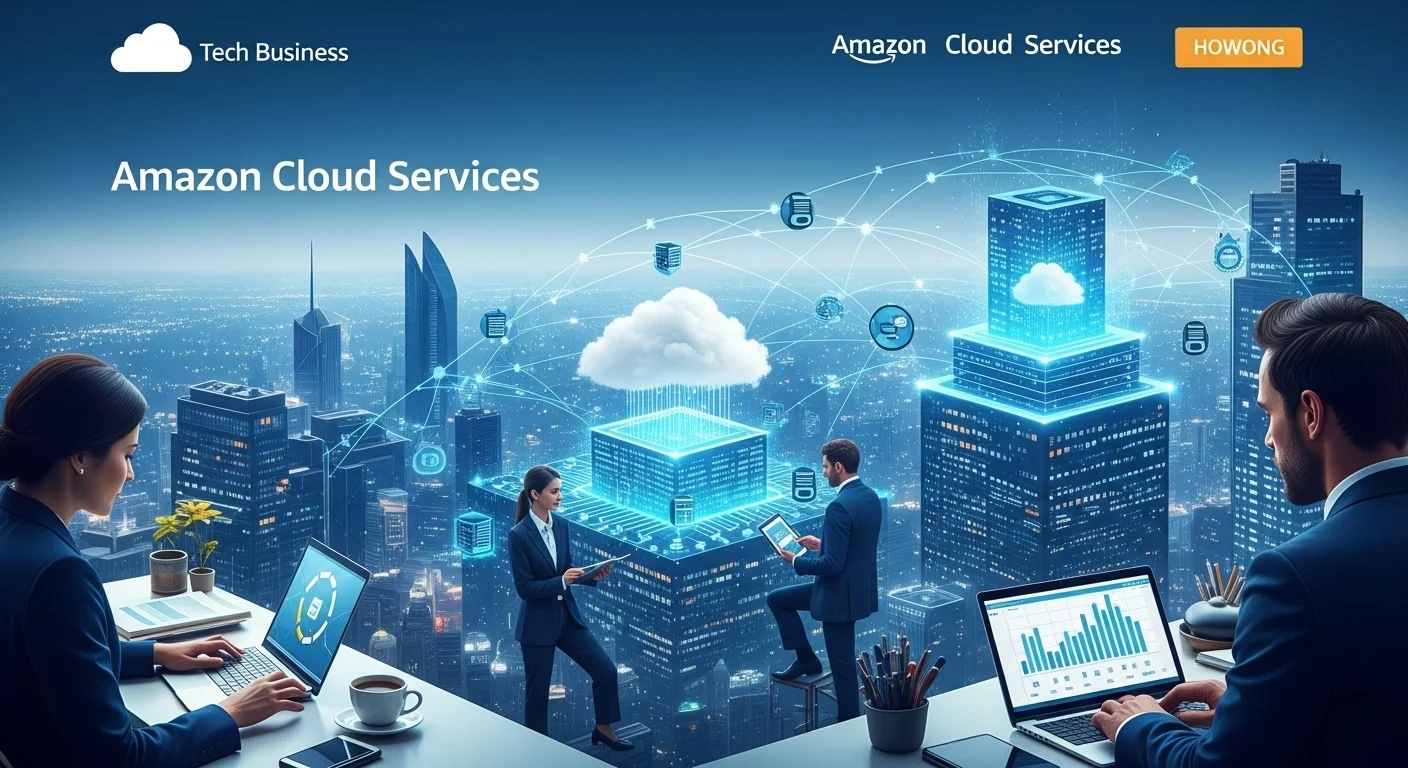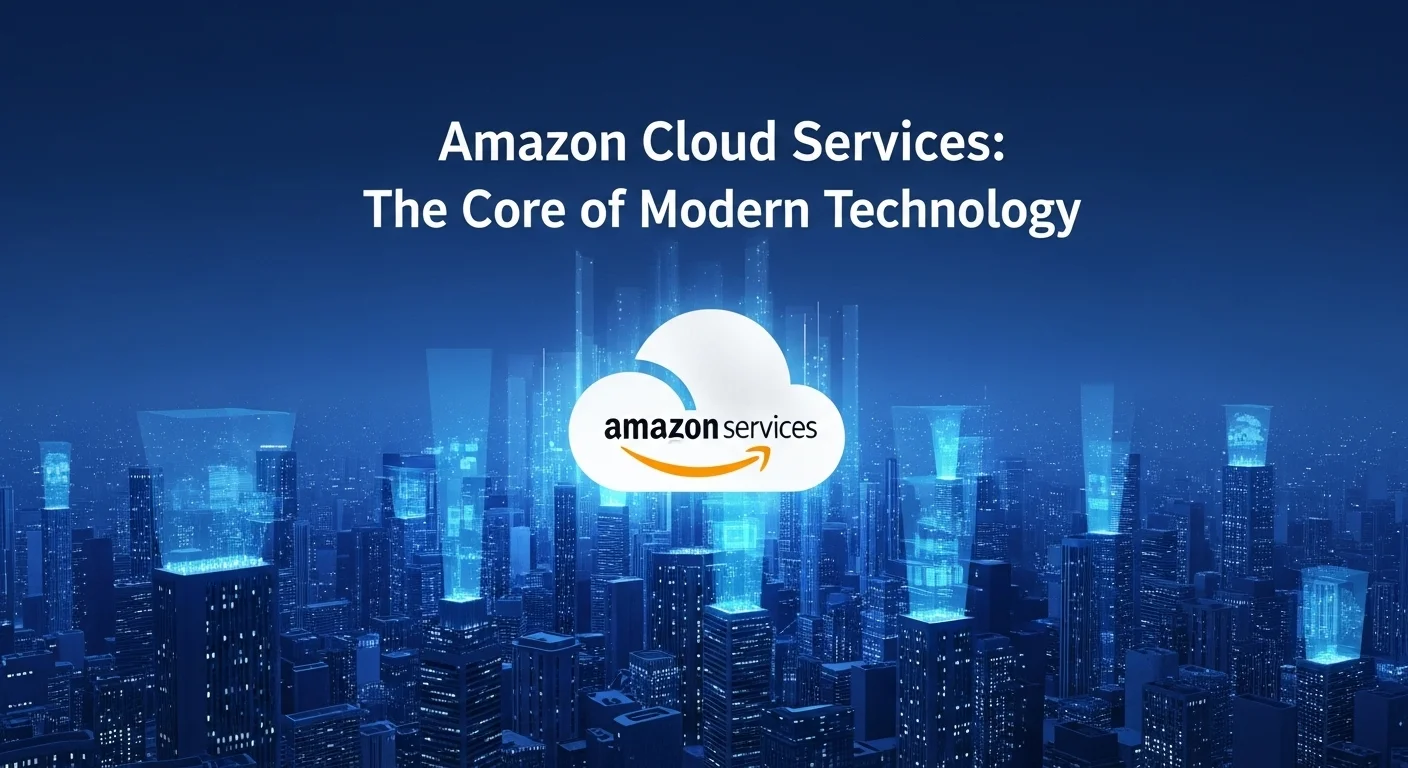What is AWS? A Plain-English Guide to Amazon's Cloud for 2024

Executive Summary
Let's be honest, 'The Cloud' can sound like a vague, technical buzzword. But what if I told you that Amazon Web Services (AWS) is the invisible backbone of a huge chunk of the internet you use every day? For years, I've worked with companies, from tiny startups to massive corporations, helping them move into the cloud, and the results are almost always transformative. AWS isn't just about storing files online; it's a revolutionary platform that has completely changed how businesses are built and run. This article is my attempt to pull back the curtain on AWS. We'll skip the dense jargon and focus on what it actually is, why it's the undisputed leader, and how it gives anyone with an idea the power to build sophisticated, global applications. For any business today, understanding AWS isn't just a good idea—it's essential for survival and growth. Think of this as your personal roadmap to harnessing one of the most powerful technology platforms ever created.
Table of Contents
Table of Contents
- What is Amazon Web Services and Why Does It Matter?
- The Core Concepts: IaaS, PaaS, and SaaS Explained
- Why is AWS So Critical for Modern Technology?
- The Real-World Business Benefits of Using AWS
What is Amazon Web Services and Why Does It Matter?
In the world of technology, Amazon is a giant. But while most people know them for online shopping, their biggest impact has been through their cloud division, Amazon Web Services, or AWS. So, what are we talking about when we say Amazon Cloud Services? Imagine a global network of massive data centers packed with servers, storage, and networking gear. AWS lets you 'rent' access to all that power on-demand, over the internet, and you only pay for what you use. I've been in this industry long enough to remember when starting a tech company meant spending a fortune on physical servers and hardware. AWS changed the game completely.
The whole idea of cloud computing was a massive shift. Before, companies had to buy, own, and maintain their own expensive data centers. AWS turned that model on its head. They took the incredible, scalable infrastructure they built for their own retail business and started offering it to the public back in 2006. This gave a two-person startup in a garage access to the same world-class tools as a Fortune 500 company. In my experience, this single move did more to fuel the last two decades of tech innovation than almost anything else. It leveled the playing field and made it possible for ideas to become reality faster and cheaper than ever before.
The Core Concepts: IaaS, PaaS, and SaaS Explained
To really get AWS, you need to understand the three main ways cloud services are delivered. I like to use a pizza analogy. AWS offers all three, giving you the flexibility to build anything you can imagine.
- Infrastructure as a Service (IaaS): This is the most fundamental level. With IaaS, AWS gives you the basic building blocks of a data center: virtual servers, storage, and networking. It’s like being handed the keys to a professional kitchen with ovens and workspaces. You decide what to cook and bring your own ingredients. Amazon's flagship IaaS product is Amazon EC2 (Elastic Compute Cloud), which lets you fire up a virtual server in minutes. You control the operating system and software, but you never have to worry about the physical machine it's running on.
- Platform as a Service (PaaS): PaaS goes a step further. It provides the infrastructure *plus* the tools and services needed to build and run an application. In our pizza kitchen, this would be like having the oven, the dough, the sauce, and the cheese all ready for you. You just add the toppings and bake. AWS services like AWS Elastic Beanstalk are perfect examples. You just upload your code, and it handles all the complex deployment and scaling work for you. This lets developers focus purely on writing great code, not managing servers.
- Software as a Service (SaaS): This is the most common model you use every day. SaaS is a fully-baked application you access over the internet, usually via a subscription. Think Netflix, Dropbox, or Salesforce. It's like ordering a pizza delivered to your door. You don't manage the kitchen or the ingredients; you just enjoy the final product. While AWS provides the infrastructure for thousands of SaaS companies, it also offers its own, like Amazon WorkMail for email or Amazon Q, an AI assistant for businesses.
Why is AWS So Critical for Modern Technology?
The importance of the Amazon Web Services cloud platform can't be overstated. It has fundamentally changed how technology is built and delivered.
1. Fueling Startups and Innovation: The pay-as-you-go model has been a lifeline for startups. I've seen countless founders launch with just a credit card, scaling their infrastructure only as their customer base grew. Companies like Airbnb and Slack were built on AWS because they could experiment and grow without crippling upfront hardware costs.
2. Transforming Big Business: Large corporations are migrating to AWS to escape the costs and complexities of their old data centers. This isn't just about saving money; it's about becoming more agile. I've helped legacy companies go from taking months to provision a new server to doing it in minutes on AWS. This speed is a huge competitive advantage.
3. Powering the Future: AWS is far more than just servers. It's a playground for cutting-edge tech like Artificial Intelligence (AI), Machine Learning (ML), and the Internet of Things (IoT). Services like Amazon SageMaker make it easier for any developer to build ML models, and AWS IoT Core helps connect billions of smart devices. AWS makes advanced technology accessible to everyone, speeding up breakthroughs in every field.
4. Global Scale in an Instant: The AWS global infrastructure is mind-boggling. It's organized into 'Regions' (like US-East or EU-West) and 'Availability Zones' (multiple, isolated data centers within a region). This design allows you to easily deploy an application around the world to be closer to your users, reducing lag and providing amazing reliability. Building that kind of global presence on your own would be impossible for most companies.
The Real-World Business Benefits of Using AWS
The practical applications of Amazon cloud computing services are everywhere. Financial firms use it for fraud detection, healthcare uses it for genomic research, and media companies use it to stream live events to millions. The core benefits for any business are crystal clear:
- Save Money: Swap huge upfront costs for a variable, operational expense. Pay only for what you use, when you use it.
- Move Faster: Get new ideas to market in days instead of months. The speed and agility you gain are game-changers.
- Scale on Demand: Never worry about buying too much hardware or running out of capacity. Scale up for a big launch and scale back down instantly to save money.
- Focus on What Matters: Let AWS handle the heavy lifting of managing infrastructure so your team can focus on building products that delight your customers.
- Go Global, Instantly: Deploy your applications in multiple countries with just a few clicks to provide a better, faster experience for users everywhere.
To put it simply, AWS has become the foundational layer of the modern digital world. It's a powerful, flexible, and cost-effective platform that has reshaped how we think about technology, and its journey of innovation is far from over.

Lifting the Hood on AWS: A Guide to Its Technology and Business Solutions
Once you grasp the 'what' and 'why' of Amazon Web Services (AWS), the next step is understanding the 'how.' I've spent my career architecting solutions on this platform, and I can tell you that its real power lies in the depth and variety of its services. This guide is for those who want to look under the hood. We'll explore the core service domains, how to adopt them strategically in your business, and how AWS stacks up against the competition. This is the practical knowledge you need to turn the promise of the Amazon Web Services cloud platform into a reality.
A Technical Look: The Core Service Domains
While AWS boasts over 200 services, you don't need to know them all. Most solutions are built using a handful of core domains. Think of these as the essential toolkits in your cloud workshop.
1. Compute Services
This is the raw processing power, the 'brain' of your applications. AWS offers different tools for different jobs.
- Amazon EC2 (Elastic Compute Cloud): This is your workhorse. Think of it as renting a virtual computer in the cloud. You can pick from hundreds of configurations—some with massive CPUs, others with tons of memory—to perfectly match your needs. For years, I've used EC2's flexible pricing, like Spot Instances, to help clients run massive data processing jobs at a fraction of the normal cost.
- AWS Lambda: This is the magic of serverless computing. With Lambda, you forget about servers entirely. You write a small piece of code (a 'function') that runs in response to an event, like a user uploading a photo. You only pay for the fraction of a second your code is running. It’s incredibly efficient and has revolutionized how we build event-driven applications.
- Container Services (ECS & EKS): Containers (like Docker) are a popular way to package and run applications consistently anywhere. AWS offers two fantastic managed services for this. Amazon ECS is its native, simple-to-use orchestrator, while Amazon EKS provides a managed version of Kubernetes, the industry standard. Both take away the headache of managing the underlying infrastructure.
2. Storage Solutions
Every application needs to store data. AWS provides different types of storage for different types of data.
- Amazon S3 (Simple Storage Service): If you remember one service, make it S3. It's like an infinite digital locker for your files. I've used it to store everything from website images and videos to petabytes of scientific data. It's incredibly durable and cheap, making it the default storage for the internet.
- Amazon EBS (Elastic Block Store): Think of EBS as the hard drive for your EC2 virtual server. It's fast, persistent storage that's perfect for things like the operating system or a database that needs rapid access to data.
- Amazon EFS (Elastic File System): EFS is like a shared network drive in the cloud. Multiple virtual servers can connect to it at the same time, which is ideal for content management systems or shared development environments.
3. Database Services
AWS has moved far beyond just renting out servers; it offers a whole suite of managed databases tailored for any use case.
- Amazon RDS (Relational Database Service): This service takes the pain out of running traditional relational databases like MySQL or PostgreSQL. It handles all the boring stuff—patching, backups, scaling—so you can focus on your data. Its cloud-native version, Amazon Aurora, offers incredible performance and reliability.
- Amazon DynamoDB: This is a beast. DynamoDB is a NoSQL database built for massive scale and speed, delivering responses in single-digit milliseconds. It's the engine behind many of the world's biggest apps, from mobile games to e-commerce platforms.
- Amazon Redshift: When you need to analyze huge amounts of data, you need a data warehouse. Redshift is AWS's solution, allowing you to run complex queries across petabytes of information to gain business insights.
Business Strategy: Adopting and Managing AWS
Moving to the cloud is a business decision first and a technical one second. A smart strategy for migration and cost control is essential.
1. Migration Strategies: The 6 R's
When I advise clients on moving to the cloud, we always start with the '6 R's' framework:
- Rehost (Lift and Shift): The quickest path. You move an application as-is. It's fast, but you won't get all the cloud benefits.
- Replatform (Lift and Reshape): A small tweak for a big win. For example, moving your self-managed database to RDS.
- Repurchase (Drop and Shop): Switch to a SaaS product that does what your old application did.
- Refactor / Rearchitect: The most involved, but most rewarding. You rebuild the application using cloud-native features to maximize performance, scale, and innovation.
- Retire: Realize you don't need an application anymore and simply turn it off. You'd be surprised how often this happens!
- Retain: Keep some applications on-premises for now, often for compliance or specific technical reasons.
2. Taming the Bill: Cost Optimization
The cloud's pay-as-you-go model is a double-edged sword. It's easy to save money, but it's also easy to overspend if you're not careful. I always preach these rules:
- Right-Sizing: Don't pay for a Ferrari when you only need a Civic. Constantly monitor your usage and choose the smallest instance that gets the job done.
- Smart Pricing: Mix and match pricing models. Use Reserved Instances or Savings Plans for predictable workloads and Spot Instances for tasks that can be interrupted.
- Use the Tools: AWS provides great tools like Cost Explorer and Budgets to track your spending. Use them.
- Automate Shutdowns: Automatically turn off development and test environments at night and on weekends. This simple step can save a fortune.
3. Security: A Shared Responsibility
A common question I get is, 'Is the cloud secure?' The answer is yes, but security is a partnership. AWS calls this the Shared Responsibility Model. AWS is responsible for the security *of* the cloud (the physical data centers, the hardware). You are responsible for security *in* the cloud (managing user access, encrypting your data, configuring firewalls). AWS gives you all the tools you need to be incredibly secure; you just have to use them correctly.
How AWS Compares to the Competition
While AWS is the market leader, it's not the only player. The main competitors are Microsoft Azure and Google Cloud Platform (GCP).
- AWS vs. Microsoft Azure: In my experience, companies that are heavily invested in the Microsoft ecosystem (Windows Server, Office 365) often find a natural fit with Azure. It has excellent hybrid cloud capabilities. However, AWS still leads in the sheer breadth and maturity of its services.
- AWS vs. Google Cloud Platform (GCP): Google's cloud shines in specific areas like data analytics, machine learning, and Kubernetes (which Google invented). Developers often love GCP for its strong open-source roots and innovative tech.
Ultimately, the choice often depends on your team's existing skills, specific project needs, and your overall business strategy. But the vast community, extensive documentation, and comprehensive feature set of the Amazon Web Services cloud platform make it the default and dominant choice for a reason.

From Theory to Practice: Tips and Strategies for Mastering Amazon Cloud Services
Knowing about AWS is one thing; using it effectively is another. Over the years, I've seen teams succeed brilliantly and others struggle. The difference often comes down to strategy and adopting the right mindset. To truly enhance your experience with the leading amazon cloud service provider, you need to go beyond the basics. This section is all about actionable advice. We'll cover the architectural 'rules of the road,' essential tools you should be using, and lessons learned from real-world companies that have used the amazon web services cloud platform to transform their business.
Building It Right: The AWS Well-Architected Framework
If there's one resource I point every client to, it's the AWS Well-Architected Framework. It’s not a service, but a philosophy—a checklist for building systems that are secure, reliable, efficient, and cost-effective. Think of it as the collected wisdom of thousands of AWS architects. Following it is the single best thing you can do for your projects.
The framework is based on six pillars:
- Operational Excellence: This is about running your systems smoothly. It means automate deployments, monitoring everything, and having clear procedures. Using Infrastructure as Code (IaC) with tools like AWS CloudFormation is a non-negotiable best practice here.
- Security: How do you protect your data and systems? This pillar guides you to lock down user access with AWS IAM, track every action with AWS CloudTrail, and encrypt your data everywhere. Security isn't an afterthought; it's job zero.
- Reliability: How do you ensure your application stays up even when things fail? This is about building for resilience. I always advise clients to design applications to run across multiple Availability Zones (AZs) so that if one data center has an issue, your app doesn't go down.
- Performance Efficiency: This is about using the right tool for the job without overspending. It involves choosing the right server size, using the right database, and continuously monitoring performance to make sure you’re not wasting resources.
- Cost Optimization: How do you avoid wasting money? This pillar is dedicated to building a cost-aware culture. It’s about understanding your bill, shutting down unused resources, and using the right pricing models to get the most bang for your buck.
- Sustainability: How can you minimize your environmental impact? AWS handles the sustainability *of* the cloud (using renewable energy, etc.), but you are responsible for sustainability *in* the cloud by building efficient applications that don't waste energy. You can learn more directly from the AWS Well-Architected Framework official docs.
Essential Tools of the Trade
To put these strategies into action, you need to master the tools. Moving beyond the web console is key to becoming a power user.
- AWS Management Console: The web interface is your starting point for exploring and managing services. It's great for learning, but not for repeatable, large-scale operations.
- AWS Command Line Interface (CLI) & SDKs: Real pros live in the command line. The CLI and language-specific SDKs (for Python, Java, etc.) allow you to script and automate any action you can perform in the console, which is infinitely more powerful.
- Infrastructure as Code (IaC): AWS CloudFormation & Terraform: This is a game-changer. Instead of clicking buttons to create servers and databases, you define your entire infrastructure in a code file. This makes your setups repeatable, auditable, and easy to version-control, just like your application code.
- Monitoring: Amazon CloudWatch & AWS CloudTrail: You can't fix what you can't see. CloudWatch is your eyes and ears, giving you metrics, logs, and alarms for all your resources. CloudTrail is your security camera, logging every API call made in your account. Both are essential for troubleshooting and security.
Lessons from the Real World
Theory is great, but seeing how other companies have solved problems provides the best insights.
Case Study 1: The All-In Startup (Netflix)
Netflix is the classic example. When they were struggling to scale their old data centers, they went all-in on AWS. This gave them the elasticity to handle huge traffic spikes for show launches. They use EC2 for massive video transcoding and S3 to store their entire content library. More importantly, they re-architected into microservices, allowing them to innovate faster and improve resilience. Their story is a masterclass in using the cloud for hyper-scale and agility.
Case Study 2: The Modern Enterprise (Capital One)
Capital One proved that even a highly regulated industry like banking could thrive in the cloud. They made a strategic bet on AWS to accelerate innovation and get out of the data center business. Security was their top concern, and they worked with AWS to build a secure, compliant environment. The result? They now operate like a tech company, releasing new features for customers faster than ever before, using everything from basic compute to advanced machine learning for fraud detection.
My Final Tips for a Better AWS Experience
- Automate Everything: Seriously. From setting up infrastructure (IaC) to deploying code (CI/CD pipelines). Automation reduces errors, increases speed, and lets your smart people focus on smart problems.
- Never Stop Learning: The AWS platform evolves daily. I tell my teams to invest time in training and certifications. It's the best way to keep your skills sharp and ensure you're using the best, most current tools.
- Stay Plugged In: Follow the AWS Blog, tune into the keynotes from their re:Invent conference, and join a local user group. The community is one of the best resources for learning what's new and what works.
- Think Serverless First: When building something new, my first question is always, 'Can we do this with Lambda?' A serverless approach can slash operational overhead and costs, since you truly only pay for what you use.
By combining a solid architectural foundation with the right tools and a commitment to automation and learning, any organization can unlock the full potential of the Amazon Web Services cloud platform. AWS provides the building blocks; your strategy is what turns them into a masterpiece.
Expert Reviews & Testimonials
Sarah Johnson, Business Owner ⭐⭐⭐⭐
As a small business owner, the cloud always seemed intimidating. This guide helped me understand the basics, especially the 'pay-as-you-go' part. I still need more on budgeting for a non-tech person, but it's a great start.
Mike Chen, IT Consultant ⭐⭐⭐⭐⭐
Solid overview. The breakdown of IaaS, PaaS, and SaaS was clear, and the '6 R's of Migration' section is something I'll be sharing with my clients. A good refresher and a handy resource.
Emma Davis, Tech Expert ⭐⭐⭐⭐⭐
This is one of the best high-level explanations of the AWS ecosystem I've read. It accurately covers the core services without getting bogged down in jargon. The Well-Architected Framework summary is spot on. Highly recommend.



